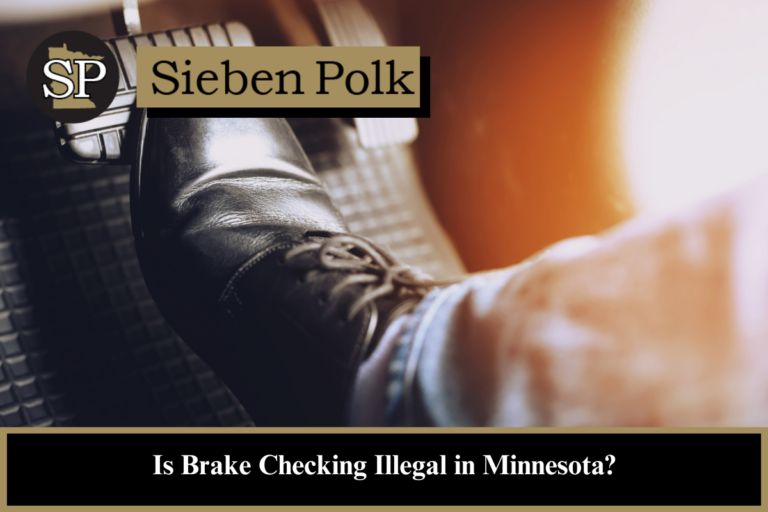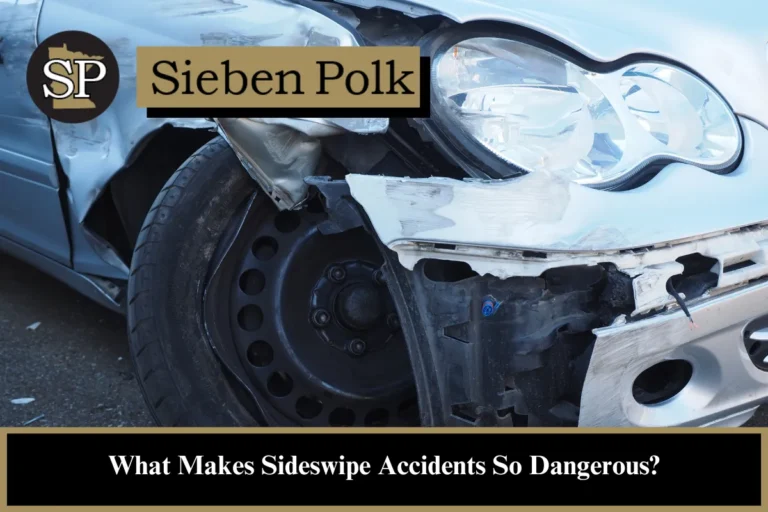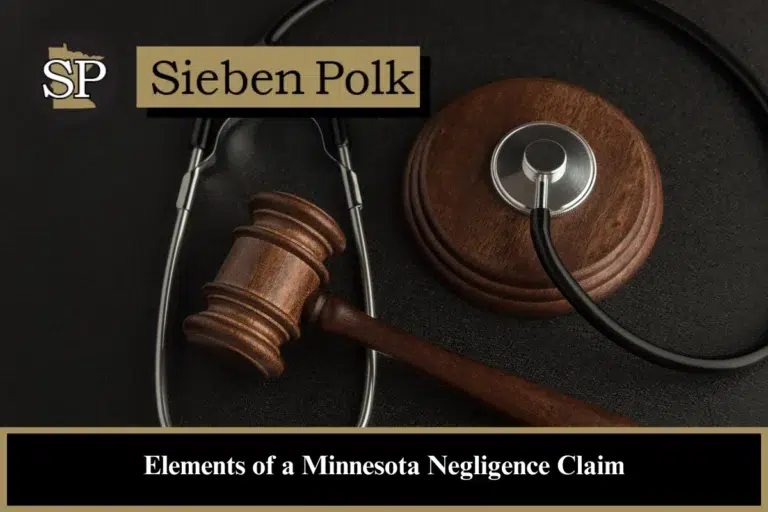Brake checking is an aggressive driving maneuver that involves slamming or tapping the brakes to intimidate or harass the driver behind you. It is often associated with road rage, and Minnesota courts may categorize it as illegal reckless driving. However, proving fault in these incidents can be complicated, requiring evidence of malicious intent. A Minnesota car accident lawyer at Sieben Polk P.A. can analyze your brake-checking claim, answer your questions, and guide you through the legal process.
What Is Brake Checking?
Brake checking describes a type of aggressive driving. Brake checking occurs when the driver in front suddenly hits their brakes to shock or startle the driver behind them.
Generally, the brake-checking driver does not intend to cause a car wreck. However, accidents from brake checking do occur. Brake checking can cause a crash because the following vehicle may be traveling too close, the driver may be distracted, or the driver cannot slow down or stop in time.
Drivers sometimes employ brake checking for the following reasons:
- To ward off tailgaters by scaring them and causing them to slow down or back off
- To express road rage
- To punish the driver behind them
- To engage in insurance company scams
Is Brake Checking Illegal in Minnesota?
While Minnesota does not have a statute specifically for brake checking, hitting your brakes while driving without good cause may be illegal as it may be considered a form of reckless driving. However, tailgating is also generally illegal in Minnesota, falling under reckless driving as well.
Minnesota Statute 169.13 covers reckless and careless driving.
Depending on the circumstances of your brake-checking incident, you may wish to speak with a lawyer who handles the following:
- Car accidents
- Motorcycle accidents
- Truck accidents
- Wrongful death lawsuits
The car accident lawyers at Sieben Polk P.A. will go through your case’s specifics to determine whether you can recover damages.
Is Brake Checking Illegal in the United States?
Most states have made brake checking illegal directly or indirectly. Alabama and California are the only states with laws specifically making brake checking illegal. The other 48 states, including Minnesota, have laws prohibiting reckless driving, aggressive driving, and careless driving, which cover behavior like brake checking.
Minnesota Statute 169.13 covers reckless and careless driving. Careless driving is defined as operating or stopping a vehicle carelessly in a manner disregarding the safety of others. Reckless driving is defined as “consciously disregarding a substantial and unjustifiable risk” that your aggressive driving could harm a person or property.
The court will consider the circumstances of the brake-checking incident before deciding whether the incident falls under reckless driving or another relevant state law.
Who Is at Fault for a Brake Checking Collision?
If a brake check incident resulted in a collision, it can be difficult to prove. The court will determine which parties are at fault for the accident. In rear-end collisions, the rear driver is often at fault, but if you can prove the front driver was brake checking, the court may hold them liable.
Fault can be proven in various ways, including:
- Witness statements
- Video footage
- Vehicle damage
- Driver statements
- Skid marks
However, it is challenging to prove intent. It is generally insufficient to show the other driver braked suddenly. You must also demonstrate that they did so with ill intent.
In many auto accidents, one driver bears most of the fault for a crash. However, in Minnesota, fault can be shared between two or more drivers under the state’s modified comparative negligence law, Minnesota Statute 604.01. You can collect damages only if you are not more than 50 percent at fault for the accident. Your damages will be reduced in proportion to your share of the fault.
Our RearEnd Accident Lawyers Are Here to Help
If a driver brake-checked you, resulting in an accident, you have a limited time to file your car accident claim. Our personal injury lawyers will provide a free case evaluation and walk you through how we can help you recover compensation.
If you or a loved one is a car accident victim, contact the experienced Eagan car crash lawyers. Call Sieben Polk P.A. at 651-437-3148 for a free consultation.




